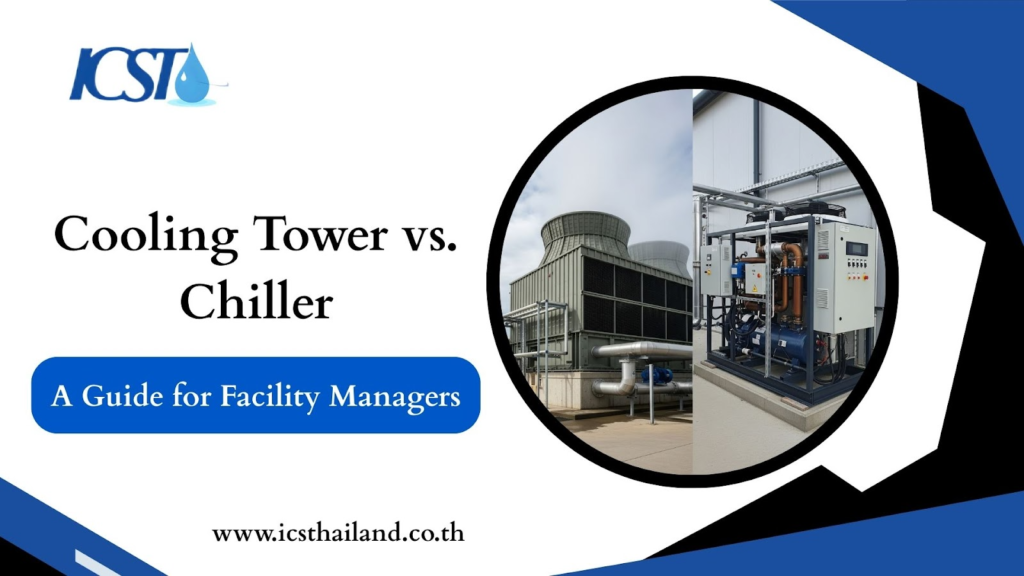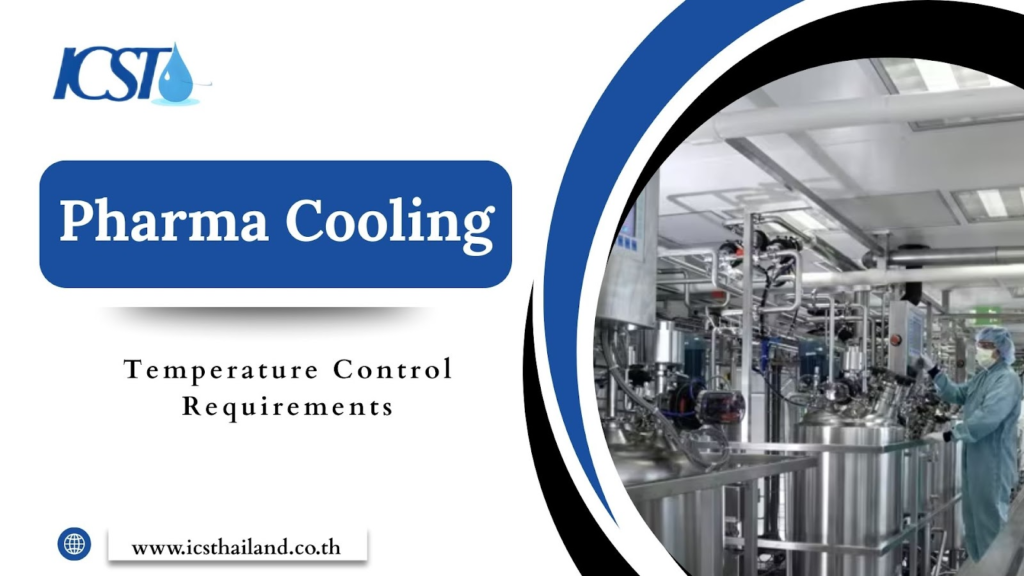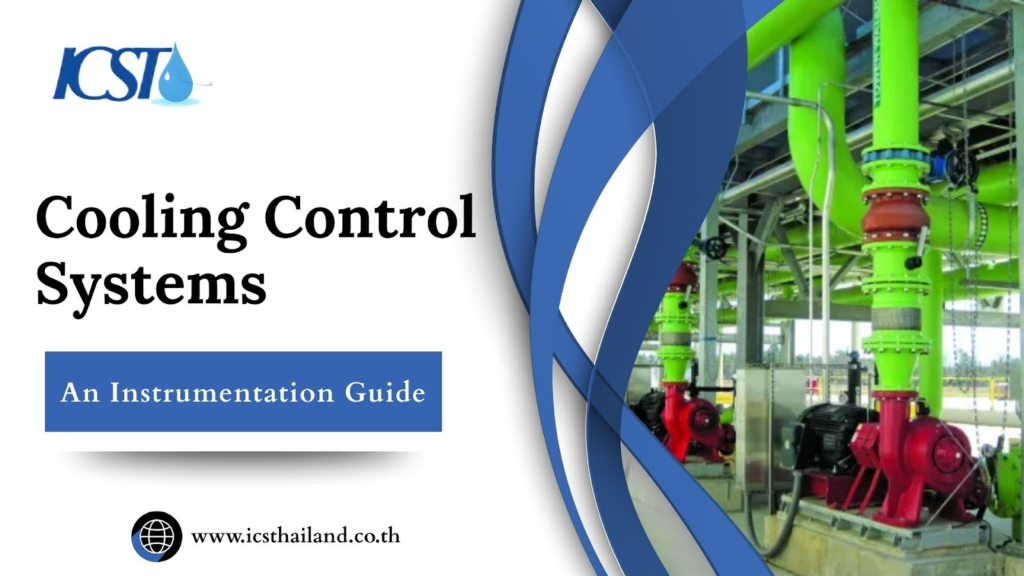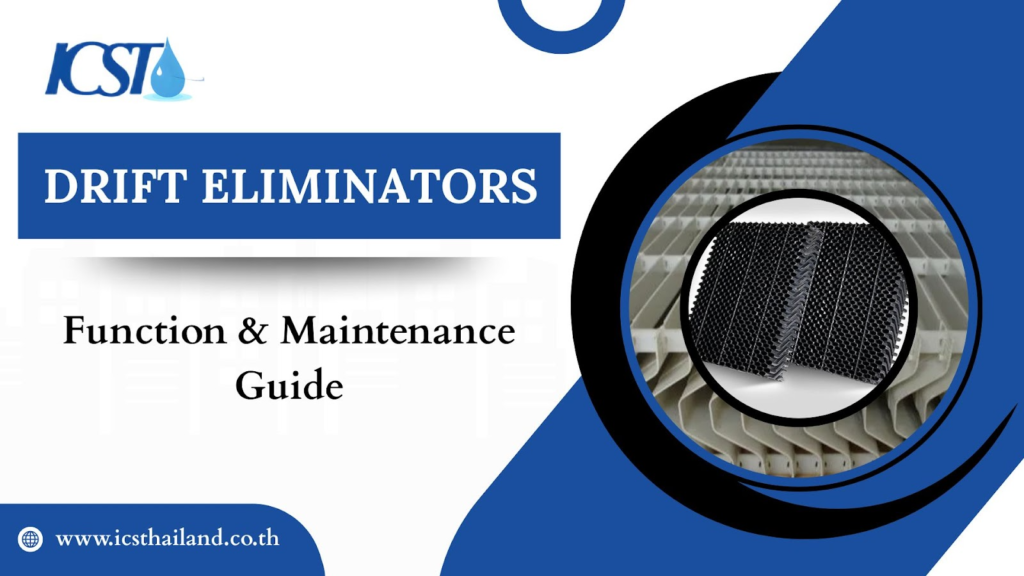Facility managers frequently encounter the terms “chiller” and “cooling tower” being used as if they mean the same thing. While both systems are critical for industrial cooling, they are fundamentally different and serve distinct roles. Understanding this difference is not just about technical accuracy; it’s about making the right decision for your facility’s operational efficiency and budget.
Choosing the wrong system can lead to significant inefficiencies, skyrocketing operational costs, and even process failures. The correct choice isn’t a matter of preference but a strategic decision based on specific cooling requirements, environmental conditions, and long-term financial goals.
This guide provides a clear, no-nonsense comparison of cooling tower vs. chiller systems. We’ll break down how each option works, highlight its key differences, and provide a practical framework to help you choose the right solution for your facility’s unique needs.
Table of Contents
ToggleUnderstanding the Fundamentals
To make an informed decision, it’s essential to first grasp the basic principles behind each system.
What is a Chiller?
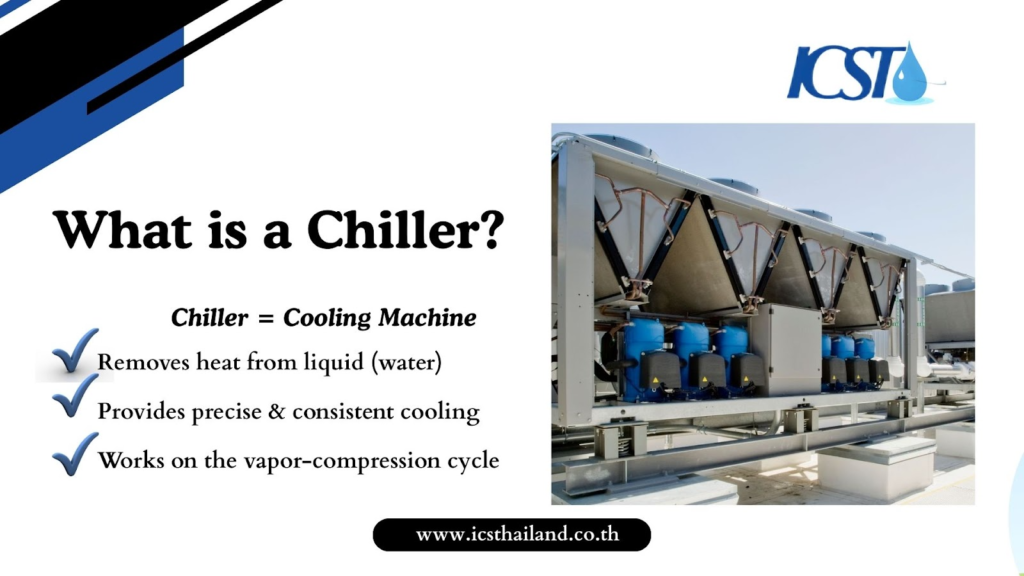
A chiller is a mechanical refrigeration device that uses a refrigeration cycle to remove heat from a liquid, which is typically water or a water/glycol mix. Its key function is to provide precise and consistent temperature cooling, independent of ambient weather conditions. The most common type operates on a vapor-compression cycle.
Process steps:
- In an evaporator, a refrigerant takes in heat from the process liquid.
- The refrigerant turns into a gas.
- A compressor compresses it.
- The gas releases heat in a condenser.
- It then expands through an expansion valve before repeating the cycle.
Advantages of Chillers:
- Efficiently cools equipment and processes to maintain optimal performance.
- Provides consistent and reliable cooling.
- Ideal for various applications such as industrial, commercial, and medical purposes.
- Offers precise temperature control for sensitive processes.
- Scalable to meet varying cooling demands and system sizes.
What is a Cooling Tower?
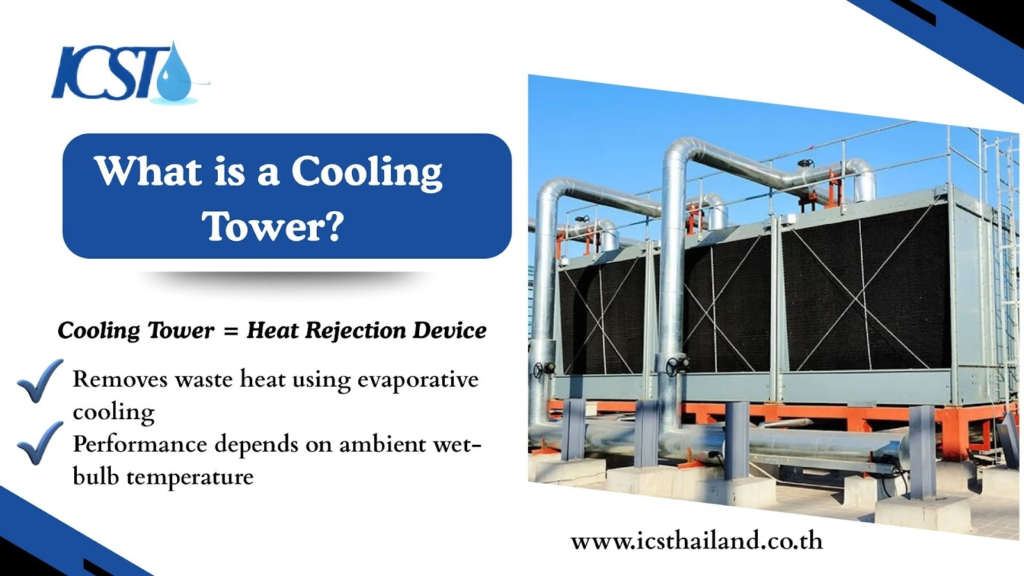
A cooling tower is a heat rejection device that removes waste heat from a water stream using the principle of evaporative cooling. Its primary function is to dissipate large heat loads efficiently, but its performance is directly tied to the ambient wet-bulb temperature.
- Hot water from an industrial process is pumped to the top of the tower.
- It flows down over fill media, which increases the water’s surface area.
- Air is drawn through the tower, causing a small portion of the water to evaporate.
- Evaporation creates a cooling effect, lowering the temperature of the remaining water.
- The cooled water is collected at the bottom and recirculated.
Advantages of Cooling Towers:
- Provides efficient cooling for industrial processes.
- Quickly lowers water temperature efficiently.
- Recirculates water, minimizing waste and promoting sustainability.
- Cost-effective and energy-efficient for managing heat.
- Enhances equipment performance by preventing overheating.
- Suitable for a wide range of applications, including HVAC systems and power plants.
- Low operational and maintenance costs compared to alternative cooling methods.
The Direct Comparison: Key Factors for Facility Managers
How do Cooling Tower vs. Chiller systems stack up in the areas that matter most to facility managers? Let’s compare them side-by-side.
| Factor | Cooling Tower | Chiller |
| Energy Efficiency | Very high efficiency for bulk heat rejection, often 3-5 times more efficient than a chiller per unit of heat removed. | Less efficient due to power-hungry compressors. However, modern technologies like VFDs are improving part-load efficiency. |
| Water Consumption | High water use due to evaporation, drift, and blowdown required to manage mineral concentration. | Water use is very low for air-cooled models. Water-cooled models require a cooling tower, resulting in moderate to high use. |
| Initial vs. Long-Term Cost | Lower initial capital cost. Higher long-term operational costs related to water, chemical treatment, and regular cleaning. | Higher upfront capital cost. Lower water-related operational costs, but potentially higher energy and specialized maintenance expenses. |
| Temperature Control | Provides water cooled to a few degrees above the ambient wet-bulb temperature. This is sufficient for many general processes. | Provides highly precise and consistent temperature control (e.g., 4°C to 20°C) regardless of ambient conditions. |
| Maintenance & Complexity | Requires frequent routine maintenance like water treatment, basin cleaning, and inspections to prevent scaling, corrosion, and biological growth. | Requires more technical, specialized maintenance for its complex refrigeration cycle, including refrigerant level checks and compressor servicing. |
| Ideal Applications | Perfect for large-scale heat rejection in power plants, refineries, manufacturing, and HVAC systems for large buildings. | Best for applications needing precise temperature control, such as data centers, pharmaceuticals, food and beverage processing, and medical imaging. |
How Chillers and Cooling Towers Work Together
It’s a common misconception that facility managers must choose one system over the other. In many cases, these two technologies are not competitors but partners in a comprehensive and highly efficient cooling plant.
A water-cooled chiller, for instance, relies on a cooling tower to function. The process is a perfect example of an integrated system. The chiller absorbs heat from a process, cooling a fluid to a precise, low temperature. This heat is transferred to a separate water loop connected to the cooling tower.
What is the advantage of this combined approach? This integrated system offers the best of both worlds: you get the precise temperature control of a chiller, combined with the superior energy efficiency of a cooling tower for heat rejection. This partnership is a cornerstone of modern, large-scale cooling solutions.
Decision-Making Matrix: Which System Is Right for You?
To determine the best path forward for your facility—Cooling Tower vs. Chiller, answer the following questions. Your responses will help guide you to the most suitable solution.
Question 1: What is the required temperature of your process fluid?
The required temperature for your process is the most important factor. What level of cooling do you need?
- If your process requires very cold, precise temperatures (for example, below 15°C or within a narrow temperature band), a chiller is necessary.
- If a slightly warmer fluid (e.g., 25-35°C) is sufficient for your needs, a cooling tower is a more energy-efficient fit.
Question 2: How large is your heat load?
The amount of heat you need to remove will influence the most cost-effective solution. How much heat does your process generate?
- For very large heat loads where bulk heat rejection is the primary goal, a cooling tower is the more efficient and economical choice.
- For smaller, distributed heat loads across a facility, a standalone air-cooled chiller may be more practical.
Question 3: How critical are water conservation and water costs?
Water availability and cost are increasingly important considerations. How does water usage fit into your operational strategy?
- In regions with high water costs or water scarcity, an air-cooled chiller is often preferred to eliminate water consumption.
- If water is plentiful and affordable, the higher efficiency of a cooling tower or a water-cooled chiller system might offer lower overall operating costs.
Question 4: Do you need consistent cooling year-round, regardless of climate?
Your local climate plays a major role in a cooling tower’s performance. Is operational consistency a non-negotiable requirement?
- If you require consistent cooling performance 365 days a year, a chiller is the only option, as its operation is independent of weather.
- A cooling tower could be an effective option if your cooling requirements can accommodate variations caused by ambient temperature and humidity.
The Final Recommendation
The choice between a cooling tower and a chiller is not a one-size-fits-all decision. A thorough analysis of your facility’s specific process requirements, budget, climate, and long-term operational goals is essential. While a cooling tower excels at rejecting massive heat loads with high energy efficiency, a chiller provides the precise, consistent cooling necessary for sensitive applications.
Ultimately, when deciding between a Cooling Tower vs.Chiller systems often work best when designed as an integrated solution, leveraging the advantages of multiple technologies.
To navigate this complexity and make the most effective investment, partnering with an expert is a critical first step. An experienced cooling specialist can assess your unique situation and engineer a solution that delivers optimal performance and value.
Not sure which system is the best fit for your facility? Contact ICS Thailand today for a comprehensive site assessment and let our experts design the most efficient and cost-effective solution for your specific needs.
Frequently asked questions
What is the difference between a cooling tower and a chiller?
A chiller is a refrigeration system designed to deliver accurate and consistent cooling to a liquid through a mechanical process. In contrast, a cooling tower is a heat rejection system that dissipates excess heat from water by utilizing the process of evaporation.
Which is more energy-efficient for cooling?
For bulk heat rejection, a cooling tower is typically more energy-efficient, often up to 3-5 times more efficient per unit of heat removed than a chiller.
Why do chillers and cooling towers often work together?
They often work together in a single system to combine their strengths. A water-cooled chiller cools a liquid to a precise temperature, and its waste heat is then transferred to a cooling tower, which efficiently rejects that heat into the atmosphere.
Which system has a higher initial cost?
A chiller typically has a higher upfront capital cost than a cooling tower. However, a cooling tower can have higher long-term operational costs related to water, chemicals, and maintenance.
